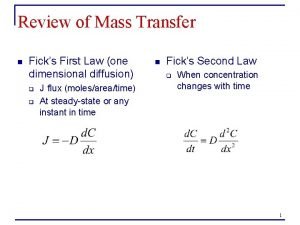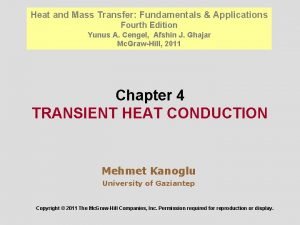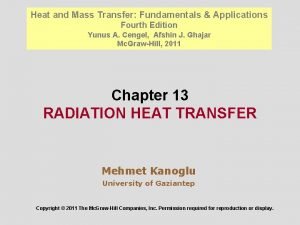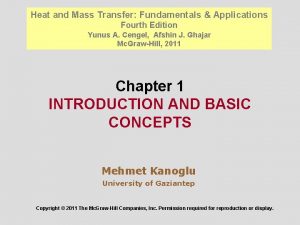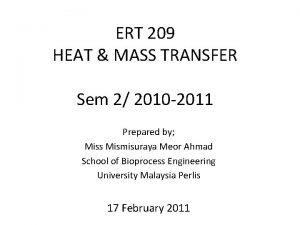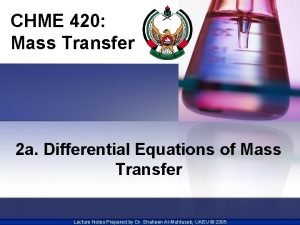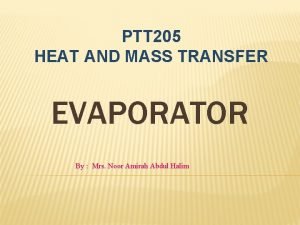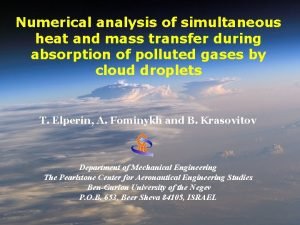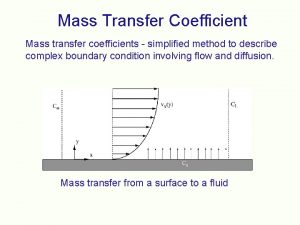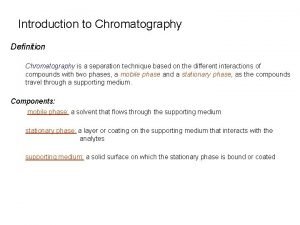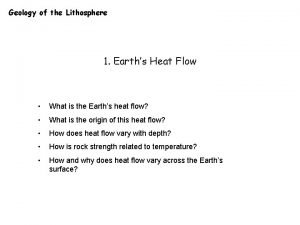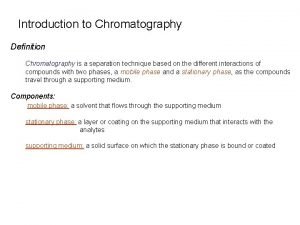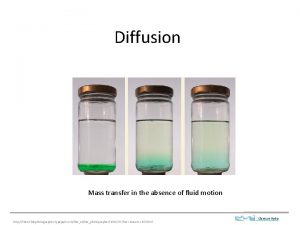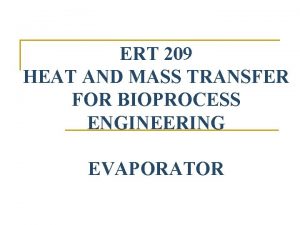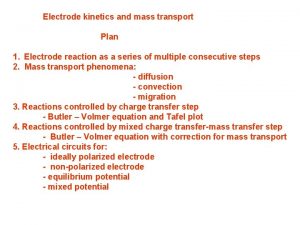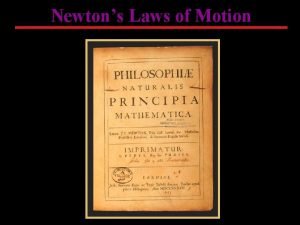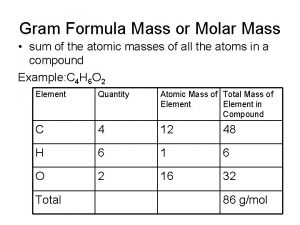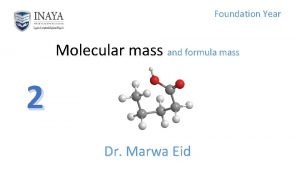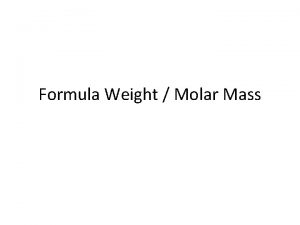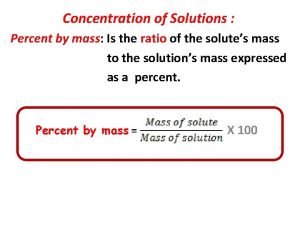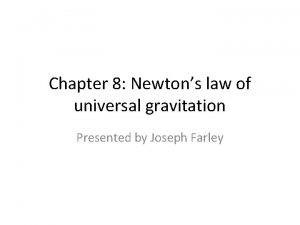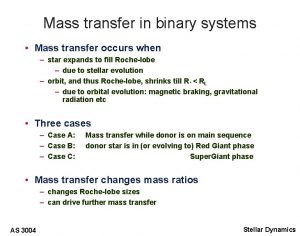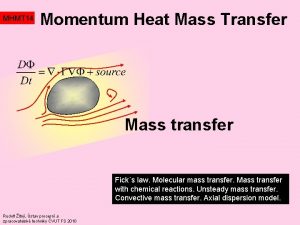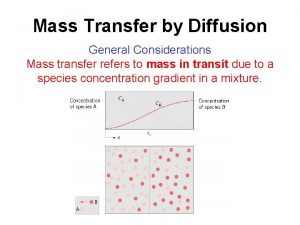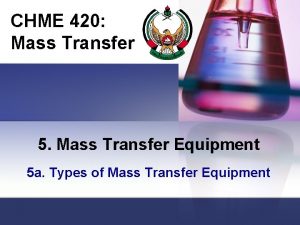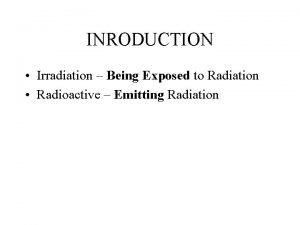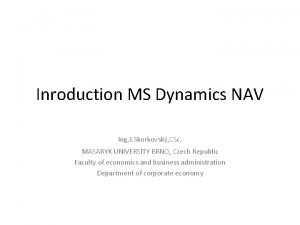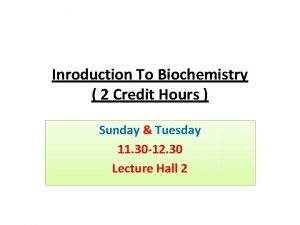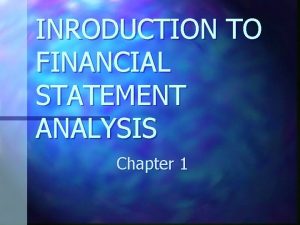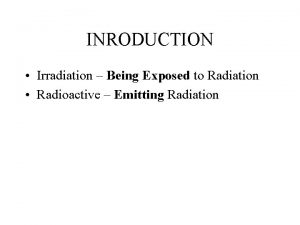MASS TRANSFER 1 UNIT 1 INRODUCTION Introduction Three











































- Slides: 43

MASS TRANSFER - 1

UNIT : 1 INRODUCTION

Introduction : • • Three fundamental transfer processes: Momentum transfer Heat transfer Mass transfer

Mass transfer : • Mass transfer is the net movement of mass from one location, usually meaning stream, phase, fraction or component, to another. • Mass transfer occurs in many processes, such as absorption, evaporation, drying, precipitation, membrane filtration, and distillation.


Driving force :

• Mass transfer may occur in a gas mixture, a liquid solution or solid. • Mass transfer occurs whenever there is a gradient in the concentration of a species.

Definition of Concentration : • Number of molecules of each species present per unit volume (molecules/m 3) • ii) Molar concentration of species i = Number of moles of i per unit volume (kmol/m 3) • iii) Mass concentration = Mass of i per unit volume (kg/m 3)

Classification of mass transfer: • • • Gas-gas contact Gas-solid contact Gas-liquid contact Liquid-solid contact Solid-solid contact

UNIT : 2 DIFFUSION

Diffusion phenomena • Fick’s law: linear relation between the rate of diffusion of chemical species and the concentration gradient of that species. • Thermal diffusion: Diffusion due to a temperature gradient. Usually negligible unless the temperature gradient is very large. • Pressure diffusion: Diffusion due to a pressure gradient. Usually negligible unless the pressure gradient is very large

Forced diffusion: • Diffusion due to external force acting on a molecule. Forced diffusion occurs when an electrical field is imposed on an electrolyte (for example, in charging an automobile battery)Knudsen diffusion: Diffusion phenomena occur in porous solids

• Whenever there is concentration difference in a medium, nature tends to equalize things by forcing a flow from the high to the low concentration region. • The molecular transport process of mass is characterized by the general equation: Rate of transfer process = driving force resistance

Modes of Mass transfer The two modes of mass transfer: • molecular diffusion • Convective mass transfer

Molecular Diffusion : • The diffusion of molecules when the whole bulk fluid is not moving but stationary. Diffusion of molecules is due to a concentration gradient. • The general Fick’s Law Equation for binary mixture of A and B • c = total concentration of A and B [kgmol (A + B)/m 3] • x. A= mole fraction of A in the mixture of A and B

Molecular diffusion equation : • Fick’s Law • is the molar flux of component A in the z direction in kg mol A/s. m 2. • is the molecular diffusivity of the molecule A in B in m 2/s • is the concentration of A in kg mol/m 3. • z is the distance of diffusion in m

Fick’s Law: • Molecular diffusion or molecular transport can be defined as the transfer or movement of individual molecules through a fluid by mean of the random, individual movements of the molecules












UNIT : 3 DRYING














 Mass transfer operations
Mass transfer operations Mass transfer
Mass transfer A wave is a disturbance that transfers
A wave is a disturbance that transfers Unit 6 review questions
Unit 6 review questions Fick's law formula
Fick's law formula Heat and mass transfer
Heat and mass transfer Define radiation shield
Define radiation shield Heat transfer
Heat transfer Bulk temperature formula
Bulk temperature formula Mass transfer equipment
Mass transfer equipment Mass transfer differential equation
Mass transfer differential equation Mass transfer coefficient units
Mass transfer coefficient units Heat transfer evaporation
Heat transfer evaporation Simultaneous heat and mass transfer
Simultaneous heat and mass transfer Mass transfer
Mass transfer Stagnant mobile phase mass transfer
Stagnant mobile phase mass transfer Heat-mass transfer and geodynamics of the lithosphere:
Heat-mass transfer and geodynamics of the lithosphere: Chromatography
Chromatography Heat transfer coefficient table
Heat transfer coefficient table Mass transfer
Mass transfer Mass transfer in bioprocess
Mass transfer in bioprocess Bioprocess mass transfer
Bioprocess mass transfer Mass transfer
Mass transfer Mass transfer technology
Mass transfer technology Thermal resistance formula
Thermal resistance formula Mass to mass stoichiometry formula
Mass to mass stoichiometry formula What makes up the atomic mass
What makes up the atomic mass Relative formula mass of hcl
Relative formula mass of hcl Percent composition of propane
Percent composition of propane Inertial mass vs gravitational mass
Inertial mass vs gravitational mass Grams to mol
Grams to mol Molecular mass g/mol
Molecular mass g/mol Molar mass def
Molar mass def Mass to moles
Mass to moles What are the units for molar mass
What are the units for molar mass Mass/mass problems
Mass/mass problems Distinguish between mass number and atomic mass.
Distinguish between mass number and atomic mass. Gravitational mass vs inertial mass
Gravitational mass vs inertial mass Formula mass vs molecular mass
Formula mass vs molecular mass Cl- molar mass
Cl- molar mass Atomicity
Atomicity Mass number formula
Mass number formula Percent by mass
Percent by mass Inertial mass vs gravitational mass
Inertial mass vs gravitational mass




